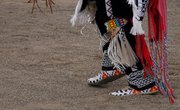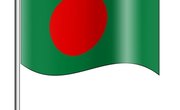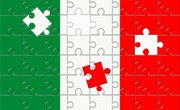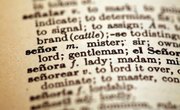Lebanese Arabic is generally considered a form of Levantine Arabic, the language spoken in parts of Israel, Jordan, Lebanon, Palestine and Syria. Lebanese Arabic is most like Syrian Arabic, although there are differences, and there many differences with Modern Standard Arabic. Although resources are somewhat slim for learning Lebanese Arabic, the ones that exist are good and will help any learner on their way.
Learning Lebanese Arabic
Visit Omniglot.com (see Resources below) to learn the form and pronunciation of the Arabic alphabet (properly called an abjad) used in Lebanese Arabic. Learning the Arabic abjad is important when studying any form of Arabic, although less so in the case of Lebanese because the language is not commonly written. If you already speak another form of Arabic, compare the pronunciations you know to the ones you find at Omniglot; if you do not speak another form of Arabic, learn only those ones used in Lebanese, as you do not need to confuse yourself this early in the process. Also note that the Latin writing system found at the bottom of the Omniglot page is only hypothetically useful, and is not the system in use for writing Lebanese in the Latin alphabet.
Visit Cedarseed.com (see link below) to learn the pronunciation of Lebanese using the Latin alphabet, which is a common practice, especially online and in teaching resources for foreigners. There are many characters that will be easy to learn, but also several problem characters. Using Cedarseed.com's system, these include: j (zh), ' (a glottal stop, commonly referred to as the sound English-speakers make between the words "uh-oh"), kh (Spanish j), gh (French or German r), r (rolled r), 3 (air rolled from the bottom of the throat), and 7 (a hard h). There are also semantic differences in Lebanese between long and short vowels (a vs. á, for instance).
Use Cedarseed.com's (see Resources below) well-ordered lessons to learn the basics of the language. Although written somewhat casually, this website is the best online and free resource for learning specifically Lebanese Arabic. Links to 20 chapters as well as several other fun and educational resources can be found at the bottom of the page, including features found only in Lebanese Arabic, as Lebanese has been highly influenced by other languages, mainly French and English.
Obtain a textbook for Lebanese Arabic. Two useful texts are available for English-speakers wishing to learn Lebanese: Hadia Harb's "Arabic You Need" and "Spoken Lebanese" by Maksoud N. Feghali (see links to both below). Both come with coordinated audio recordings, which are important in learning Lebanese, giving you the chance to hear native speakers interacting with each other and thus the best idea of the language's sounds. Feghali's book uses only Latin characters, which enhances the idea is that Lebanese is truly a spoken language.
Find a place where you can practice conversational Lebanese Arabic. This could be an organized discussion group or simply a shop or restaurant where you know Lebanese Arabic is spoken. Speaking with natives is one of the best ways to make progress, as you can learn colloquial speech from them as well as benefit from them correcting your mistakes.
Tip
Aim for about an hour's worth of study per session, especially when first beginning, to make fast progress and to keep material fresh in your mind.
Related Articles
References
Tips
- Aim for about an hour's worth of study per session, especially when first beginning, to make fast progress and to keep material fresh in your mind.
Writer Bio
Erik Steel is a graduate of the University of Michigan, earning his bachelor's degree in Russian. Steel has worked as writer for more than four years and has contributed content to eHow and Pluck on Demand. His work recently appeared in the literary journal "Arsenic Lobster."









